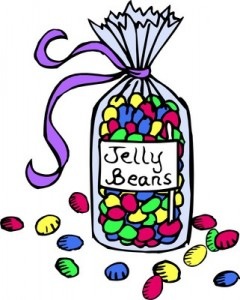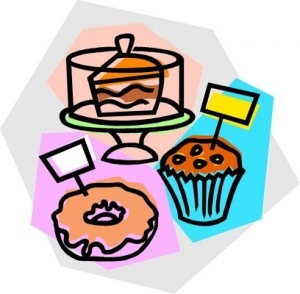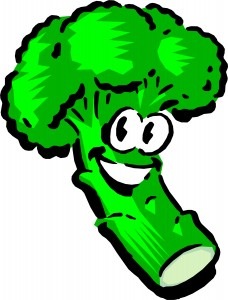 Easter Eggs: The Confectionary Type
Easter Eggs: The Confectionary Type
They’re everywhere and at every price point. Some are piped with flowers and others are wrapped in foil. You find them in supermarkets, discount stores, and fancy candy stores.
Easter is the second ranked holiday for candy purchases in the US (just behind Halloween) and solid, hollow, and filled chocolate Easter eggs are some of the most popular choices of Easter candy.
Calories in Chocolate Easter Eggs
I don’t want to be a killjoy, but chocolate is a high calorie, high fat food.
Here’s the stats for some popular chocolate eggs:
- Hershey’s Cadbury Chocolate Crème Easter Egg: 1 egg (39g), 180 calories, 8g Fat (5g saturated), 25g Carbs, 2g Protein
- Hershey’s Cadbury Crème Egg, original milk chocolate with soft fondant crème center: 1 egg (39g), 170 calories, 6g fat (3.5g saturated), 28g Carbs, 2g Protein
- Hershey’s Cadbury Mini Egg: solid milk chocolate eggs with a crispy sugar shell: 12 eggs (40g), 200 calories, 9g fat(5g saturated), 28g carbs, 2g protein
- Hershey’s Milk Chocolate Eggs: 7 pieces, 200 Calories, 12g Fat (7 saturated), 24g Carbs, 3g Protein
- Dove Silky Smooth Milk Chocolate Eggs: 6 eggs, 240 Calories, 14g Fat (8g saturated), 26g Carbs, 3g Protein
- Dove Rich Dark Chocolate Eggs: 6 eggs (43g), 220 calories, 14g Fat (8 saturated), 26g carbs, 2g Protein
- Reese’s Milk Chocolate and Peanut Butter Eggs: 5 pieces (38g), 190 Calories, 12g Fat (6 saturated), 21g Carbs, 4g Protein
- M & M’s Milk Chocolate Speck-Tacular Eggs: 1/4 Cup (12 pieces), Calories: 210 Calories, 10g Fat (6 saturated), 29g Carbs, 2g Protein
- Solid Milk Chocolate Easter Bunny: 2.5 oz, Calories: average 370
But Isn’t Chocolate Good For Me?
The health benefits in chocolate come from cocoa and dark chocolate has a greater concentration than milk chocolate. White chocolate, without any cocoa in it, is not really chocolate. In a recent study, German scientists followed 19,357 people for at least 10 years and found that those who ate the most chocolate, (average 7.5 grams a day or .26 oz), had lower blood pressure and a 39% lower risk of having a heart attack or stroke than people who ate the smallest amount (1.7 grams or .06 oz a day).
Chocolate, especially dark chocolate, contains flavonols which have antioxidant qualities and other positive influences on your heart health. It can be heart healthy if it replaces an unhealthy, high calorie snack, but there is still no recommended amount for health benefits.
Just a heads-up: Those delicious, pastel wrapped chocolate Easter eggs are caloric and moderately high in fat, one-third of it the type of saturated fat that isn’t heart healthy. Extra ingredients like crème and caramel fillings can add lots of extra fat and calories.



